Saigon to Phu Quoc Island Motorbike Loop: The Ultimate Vietnam Adventure
The Saigon to Phu Quoc Island Motorbike Loop is the ideal trip for you if you love the notion of seeing Vietnam on two wheels. From the optimum time to visit the most picturesque locations along the way, MOTOGO Tours will delve thoroughly into every element of this motorbike loop in this article.
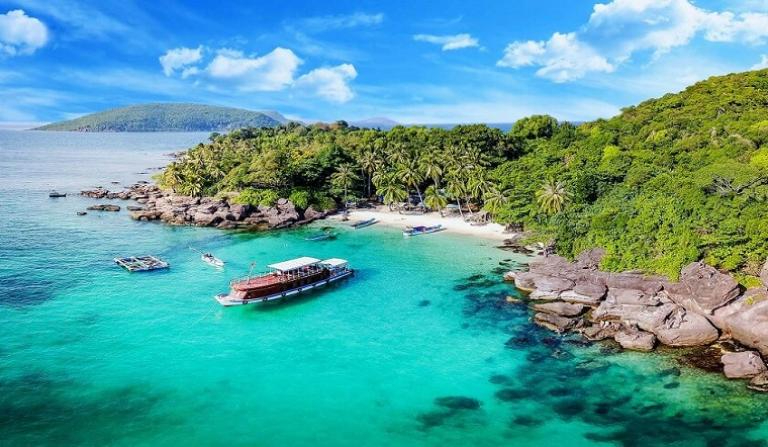
What is the Saigon to Phu Quoc Island Motorbike Loop?
The Saigon to Phu Quoc Island by motorbike is a scenic motorbike route that connects Ho Chi Minh City (Saigon) to Phu Quoc Island. This excursion is a special mix of nature, culture, and adventure since it covers urban scenes, rural settings, and coastal roads. From vivid city markets to rich jungles, peaceful rivers, and golden beaches, riders will see everything.

The Perfect Route for Adventurers
One great approach to observe Vietnam from another angle is on motorbike excursions. A motorbike loop provides flexibility, independence, and a greater link to the local culture unlike conventional trips, where you are constrained to the usual tourist sights. Those who prefer adventure, savor the natural surroundings, and value the excitement of the open road will find especially ideal the Saigon to Phu Quoc Island Loop.
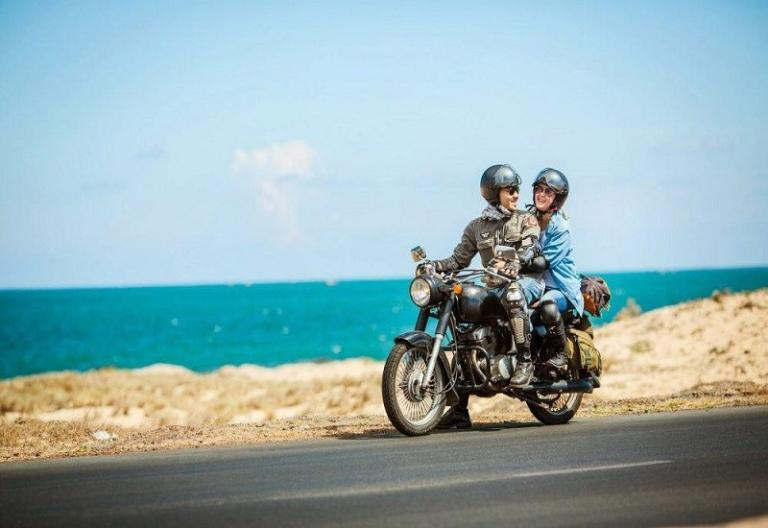
Best Time to Take the Saigon to Phu Quoc Island Motorbike Loop
Ensuring you enjoy the best experience depends critically on timing. Usually spanning December to April, Vietnam’s dry season is the best time for this motorbike loop. Long motorbike rides are ideal in the warm, dry weather. Since many areas have frequent heavy downpours during the rainy season, May to November, riding might be more difficult.
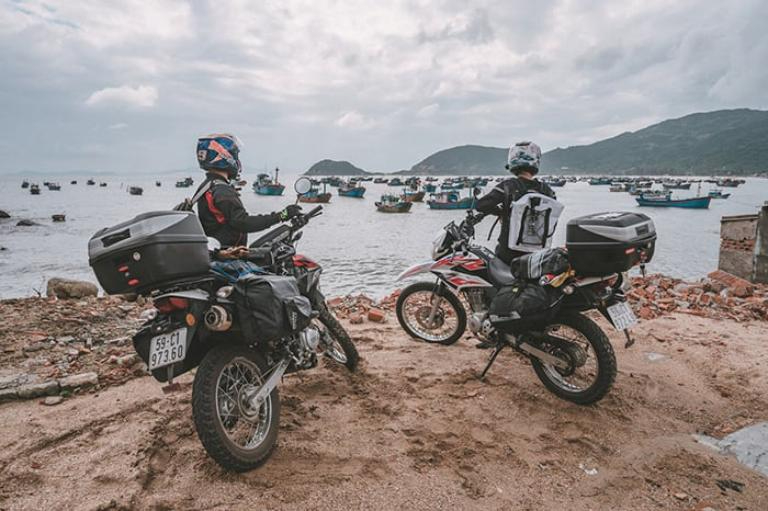
Duration and Distance
Depending on how much time you wish to spend at each location, the whole Saigon to Phu Quoc Island Motorcycle Loop takes five to seven days to finish. With a mix of riding and sightseeing, a few days will easily allow one to cover the about 800 kilometers overall trip.
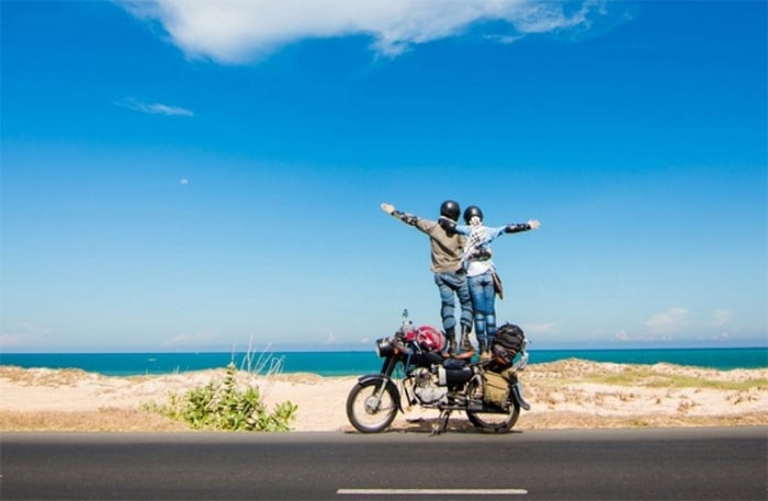
>>> Explore: Ho Chi Minh Midnight Motorbike Tour – Discover Saigon’s Nightlife in Style
Guide: Saigon to Phu Quoc by Motorbike
Along your trip, you will stop at several amazing locations highlighting Vietnam’s varied history, scenery, and culture. These are the paths taken along the way:
Section 1: Saigon to Ha Tien (via Chau Doc) | 300km
Early in the morning, before Saigon opens, set off your trip. The calm streets and cold early air allow you to enjoy the city at its quietest before the trucks and traffic disturb your journey. Try to leave between 4:00 and 5:00 a.m.
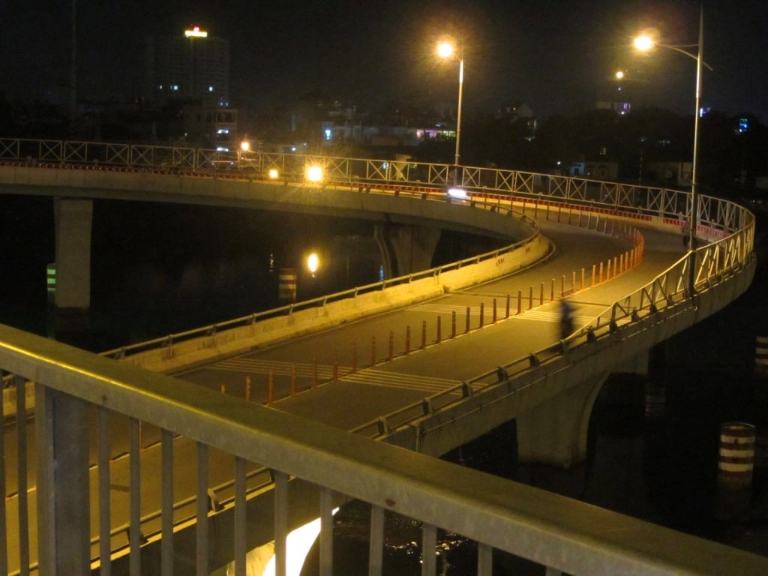
Out of the city, take the Vo Van Kiet Expressway west. You will be crossing fruit farms, canals, and busy local markets as the sun starts to rise, into the rich and verdant Mekong Delta. The road passes past little communities like Tan Thanh, where one may sip coffee by the river and view ships float by.
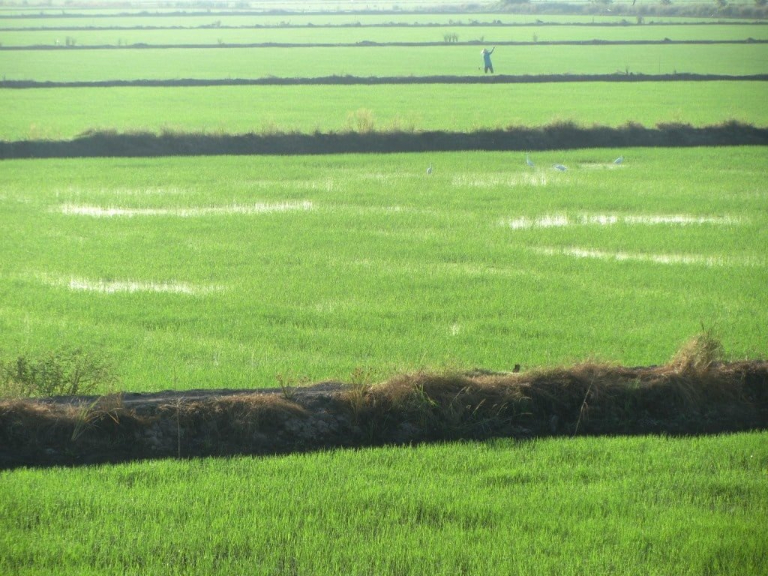
Proceed down the delta roads, past peaceful communities and large rice fields. Large palm trees, broad open areas, and the sporadic rice boat making its way across the canals define the breathtaking landscape here. The scene changes as you get closer to Chau Doc, with little mountains and vivid local culture beginning to show especially near the Cham settlement.
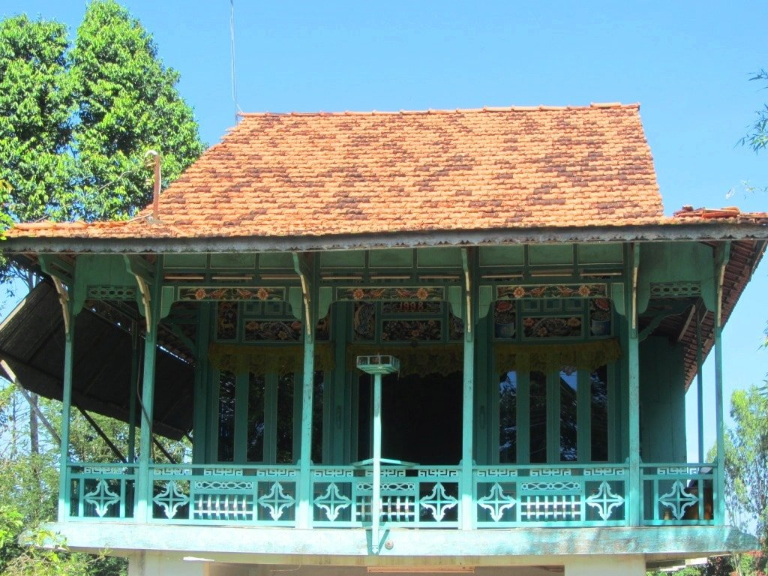
Rich in history and a major stop on routes between Vietnam and Cambodia, Chau Doc is a busy town. From local soups to fresh seafood dishes, this is a terrific spot to stop if you’re ready to relax and provides a variety of lodging options.
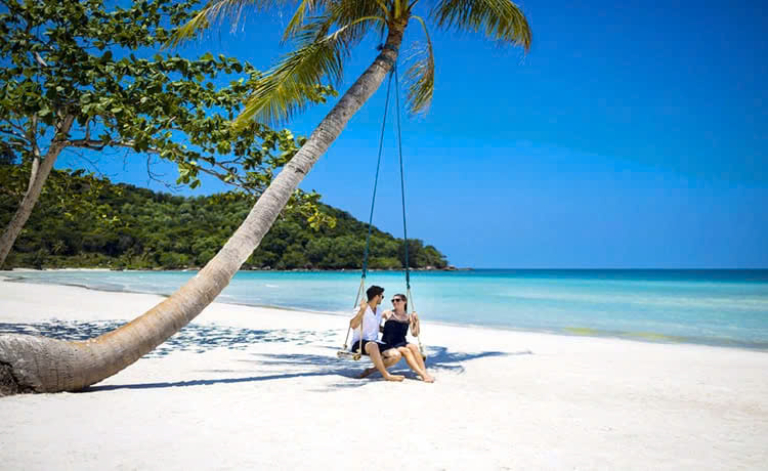
Beyond Chau Doc, follow the picturesque path to the Cambodian border via mangrove woods and communities where time appears to slow down. This is a peaceful trip on the quiet roads here, which run alongside verdant surroundings and sporadic boat traffic over the canals. Finish your journey in Ha Tien, a little village close to the Gulf of Thailand with a riverfront of great beauty and old colonial appeal. From here, a short ride away are boats to Phu Quoc.
Section 2: Exploring Phu Quoc Island by Motorbike | Distance: 210km
Once you have savored Ha Tien’s beauty, grab your motorbike and board one of the daily swift boats or vehicle ferries headed to Phu Quoc Island. Tickets are reasonably priced; booking is easy. Depending on the type of ship and route, the trip usually takes 1.5 to 3.5 hours. See my Guide to the Phu Quoc Ferry for complete ferry information including schedules and rates.
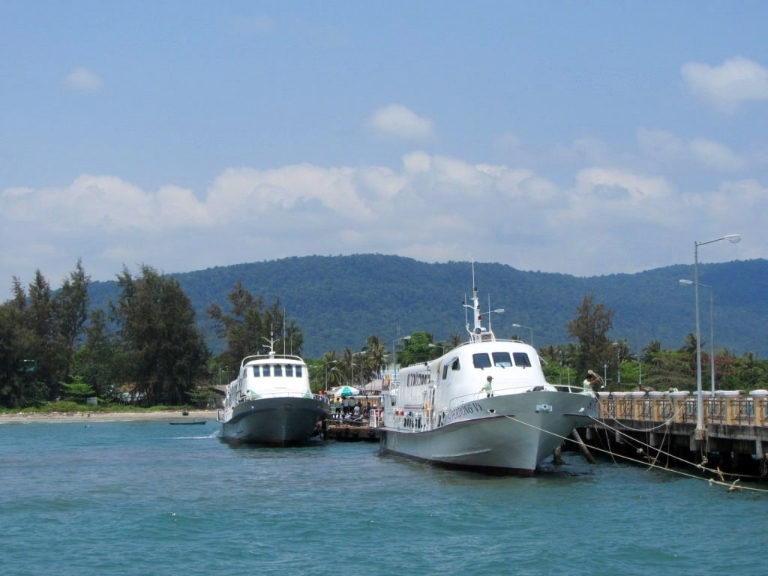
Arriving by ferry always exudes adventure; arriving on Phu Quoc on your motorbike adds still another level of thrill. You will glimpse the rich, jungled ridges on horizon as the ferry approaches the island. Ready to start your adventure throughout Vietnam’s biggest tropical paradise, after moored you will ride right onto the island.

Recent improvements in infrastructure make riding a motorbike around Phu Quoc simpler than it has ever been. Many old dirt pathways have been rebuilt by new paved roads, even reaching some of the more isolated beaches on the island. This will be evident right away as you ride on a recently paved road through traffic from the ferry terminal. Join Road DT47 and travel northwest, whirling yourself near Duong Dong Town in around twenty minutes.
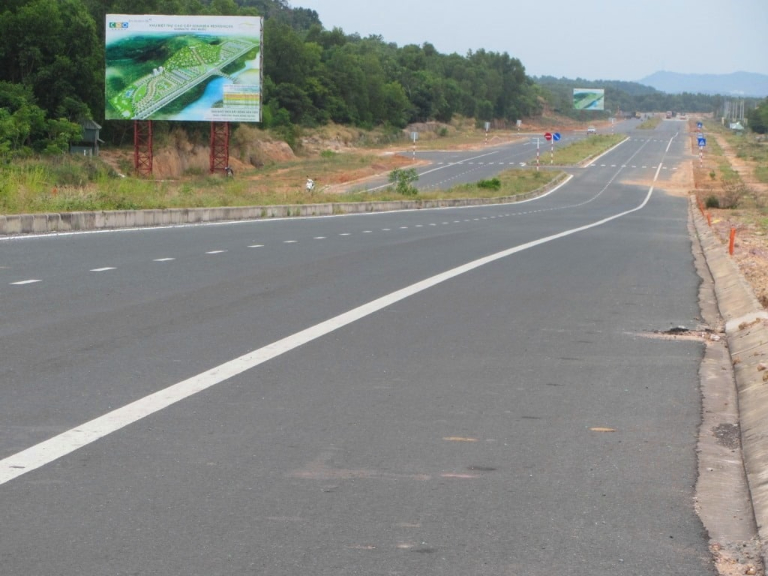
Grab a free, yearly-updated tourist map of Phu Quoc right in Duong Dong, the vibrant urban core of the island. Duong Dong is split in two: the more real town to the north and east, where people live and work; the touristy Long Beach area to the south, dotted with resorts. Though Long Beach is breathtaking with calm waves and palm-fringed sands, it may get packed especially in busy times.
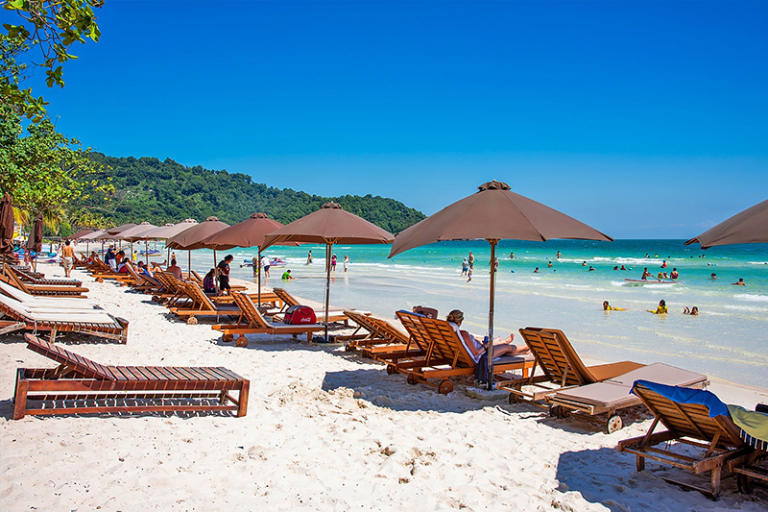
Regarding cuisine, the Night Market is still a favorite even if it is currently somewhat popular among tourists. See Sông Xanh eateries or Ra Khởi (131 Đưởi 30/4) for a more local experience. Recently added is the Saigonese Eatery; Buddy Cafe is ideal for coffee or ice cream. Miss bún kèn (seafood soup) at Mrs Luom’s for a real Phu Quoc breakfast.
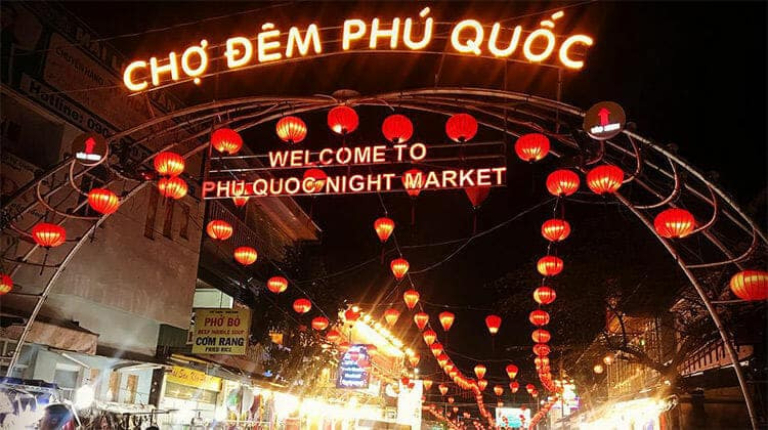
Head south on Tran Hung Dao Street from Duong Dong. Once the road turned into a dusty track leading to the southern edge of the island past the airport turnoff, that is swiftly changing. New homes, shopping centers, and resorts are rising up to change the neighborhood. Anticipating this, a multi-lane highway has opened running parallel to the coast but behind the new developments, providing a short path to An Thoi.
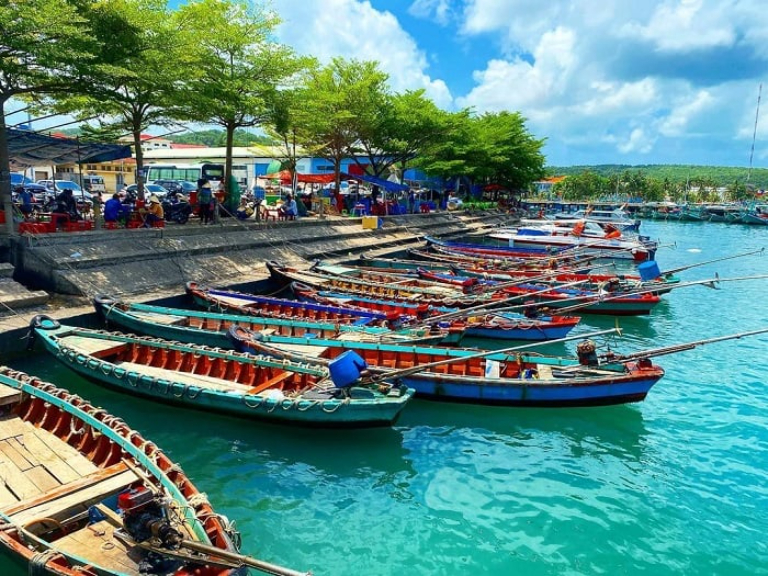
The primary port of Phu Quoc is An Thoi, at the southernmost point. Owing continuous building, this is a fascinating but hectic region. Should you not be seeking lunch, keep on the new highway until you come upon Road DT46, where the Marriott Emerald Bay is located. Once among the jewels of the island, Bai Khem Beach has been absorbed by the region. Although you can still visit the beach, it is under renovation hence it would be more enticing to keep Bai Sao (Sao Beach).
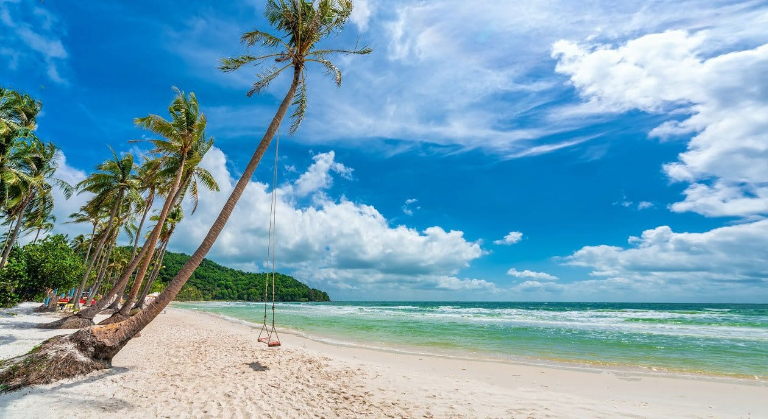
Still one of Phu Quoc’s most visited sites, Sao Beach is known for its pure white sand and glistening clean waves. But it’s been busier over time, drawing more Vietnamese visitors. See Paradiso Beach Club to really appreciate it; you can sip a Gin & Tonic under the palm trees and cool off in the Gulf of Thailand.

Proceed north on DT46, encountering vibrant exotic birds and air with eucalyptus aroma. The route brings you to Ong Lang Beach, among the island’s most calm and beautiful spots. If you feel like swimming, look at the resorts there; both Thuy House and Mango Bay provide distinctive experiences.
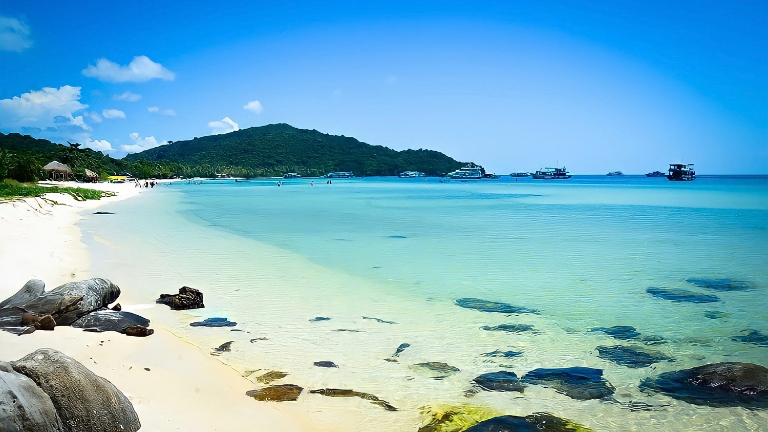
Road DT45 crosses a river few kilometers north to reach Cua Can Beach, a long sandbar accessible via paths from a small fishing community. Go to Chez Carole Resort for a fantastic perspective over Cua Can Beach. Those looking for unspoiled beauty will find plenty of natural appeal in this area.
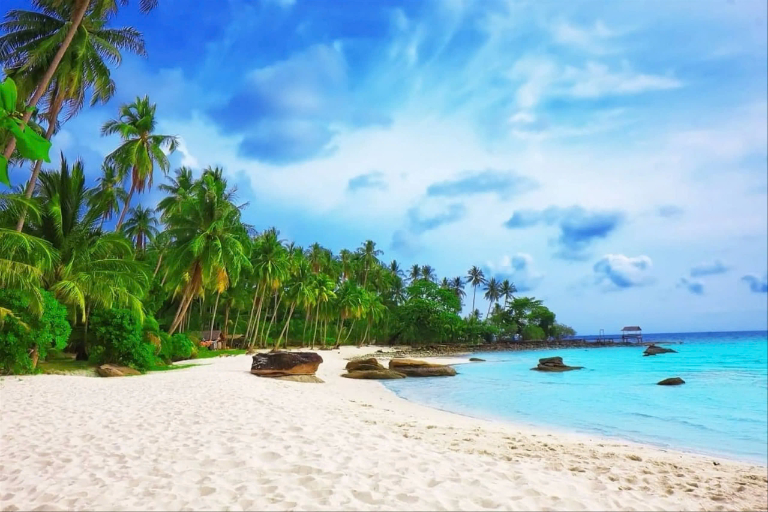
Proceeding north, keep Vung Bau Beach, a peaceable refuge encircled by tropical vegetation. Head north from Vung Bau Beach toward the northernmost tip of the island, Ganh Dau. Although Ganh Dau is a vibrant fishing town, Biên Hải Quán restaurant presents great seafood with views of the busy fishing boats. Keep east along a little paved road to some remote resorts with peaceful seaside access.
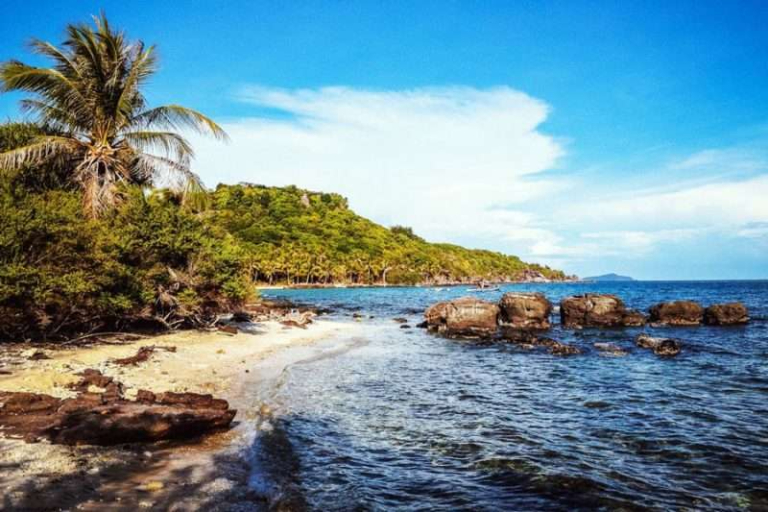
Finally, either via a more picturesque dirt road across rich tropical forest or a paved road via Cua Can, two paths link Ganh Dau to Bai Thom. Though road conditions might be erratic, the later is slower but provides access to Rach Vem Beach, a hidden treasure worth seeing. Among the well-known pepper farms on the island, Pepper Farm Bungalows close by Bai Thom provide a lovely and reasonably priced accommodation.
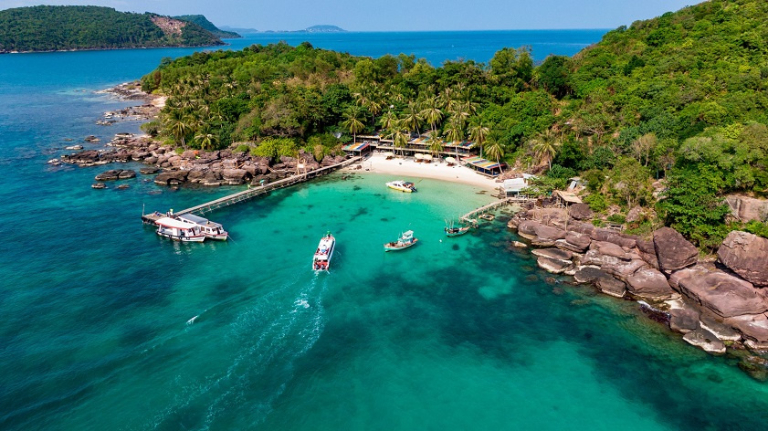
>>> Explore the Hidden Gems of Binh Thuan Back-Roads
Section 3: Rach Gia to Saigon (via Can Tho) | Distance: 290km
A vibrant metropolis in the Mekong Delta, Rach Gia contrasts sharply with the laid-back pace of Phu Quoc Island. Modern infrastructure and a seaside road among other new projects have turned it into a vibrant, cosmopolitan center. Fast boats from Phu Quoc arrive at the ferry terminal on Nguyen Cong Tru Street, where the congested streets offer a disorganizing introduction to the city.

There is plenty of street food; travel along the seaside road for chic cafés and BBQ seafood or find great Chinese-style roast duck and pig close to the square. Discover the local Chinese culture and some quite lovely temples by exploring the backstreets. Not far from the ferry pier, a reproduction of the French ship L’Espérance honors the heroism of Nguyễn Trung Trực, who blew her up in 1861. A temple and monument respect his patriotism.

Leaving Rach Gia on the broad Ton Duc Thang Street, head south. After a left onto Phan Thi Rang Street, pass through new housing complexes, then turn right onto Nguyen Trung Truc Street and go along Rach Soi to Highway QL61. The trip starts with a slog in the industrial suburbs of the Delta, but shortly you will be riding among apple orchard and rice fields. Look for Khmer temples along the road.

Though the road to Vi Thanh is not smooth, the town provides a pleasant halt for a rest before heading on QL61B toward Can Tho. As you get to the city, traffic gets up; but, you can avoid it by crossing the bridge over the Lower Mekong River on QL1A and then continuing Vinh Long. From the Dinh Khao ferry, cross the river; then, travel east on DT883 via verdant fruit orchards. If you wish to stretch your vacation, think about spending one extra comfortable night at Forever Green Resort.
From DT883, drive towards My Tho, connect to QL60, turn left following the Rach Mieu Bridge. Before heading east on QL50, try the famed “hủ tiếu Mỹ Tho” noodle soup to avoid the crowded QL1A. This slower path ends at the My Loi Bridge, where one may enjoy the last views of the Mekong before north toward Saigon. Although the last stretch is crowded and contaminated, keep on QL50 till you get back to Saigon by means of the Vo Van Kiet Expressway.
How to Plan Your Motorbike Tour
Maximizing your trip on the Saigon to Phu Quoc Island Motorbike Loop depends on planning. This is a basic handbook to assist with preparation.
Renting a Motorbike in Saigon
If you do not already own a motorbike, worry not; Saigon boasts a plenty of rental stores for them. Make sure you select a trustworthy service, examine the state of the bike, and make sure it fits the upcoming trip while renting. Remember to pack your international driver’s license or the required paperwork for the motorcycle rental.
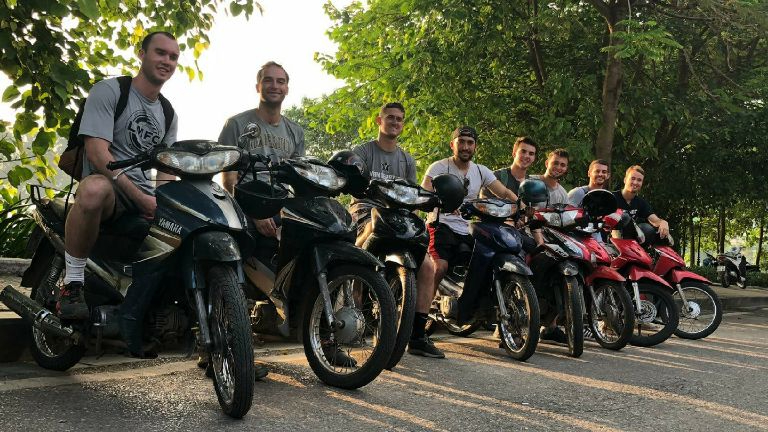
Choosing the Right Tour Operator
Many tour firms provide motorbike rides from Saigon to Phu Quoc for people who would rather have a more guided experience. Especially if you are not familiar with Vietnamese roads, following a guide will guarantee a safer and more seamless travel and help you gain understanding of the local history and culture. Search for operators with skilled guides, clean motorcycles, and decent reviews.
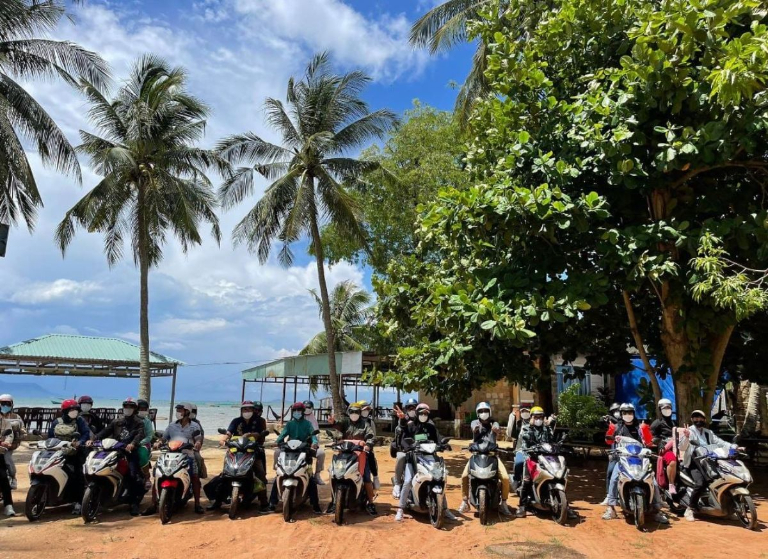
What to Pack for the Saigon to Phu Quoc Island Motorbike Loop
This journey calls for packing light but cleverly. You will want clothes fit for the tropical heat as well as the sporadic rain shower. Bring along a decent rucksack, sunscreen, rain gear, and comfy shoes. Remember your personal needs such a first aid kit, power bank, and camera.

The Saigon to Phu Quoc Island Motorbike Loop offers an unforgettable adventure through one of the most beautiful areas of Vietnam. This road offers on all fronts whether your search is for breathtaking scenery, rich cultural encounters, or the excitement of the open road. Every moment on this motorbike circuit, from the busy streets of Ho Chi Minh City to the calm beaches of Phu Quoc, lets you really experience Vietnam.
Related Posts:
- Beautiful Routes in Southern Vietnam: Scenic Motorbike Adventures
- Ho Chi Minh to Mui Ne by Motorbike: The Ultimate Road Trip Guide
- Saigon to Dalat by Motorbike – Complete Guide to an Epic Journey
- Saigon to Ca Mau Loop: The Ultimate Guide for Southern Vietnam Exploration
- Phan Rang to Cam Ranh by Motorbike: Ultimate Travel Guide for Adventure Seekers



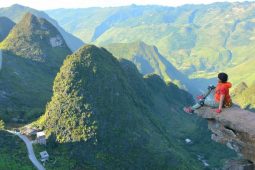

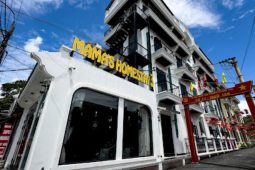


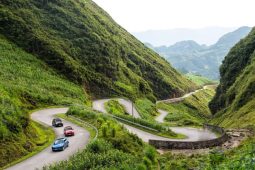


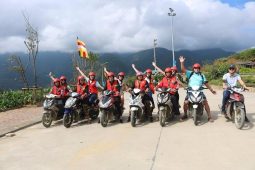
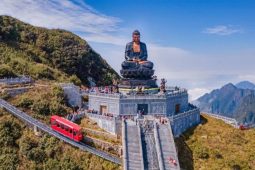
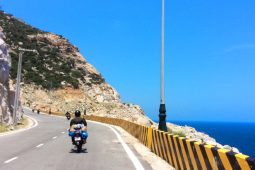
Be the first to comment!